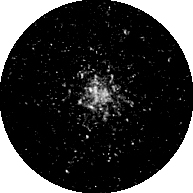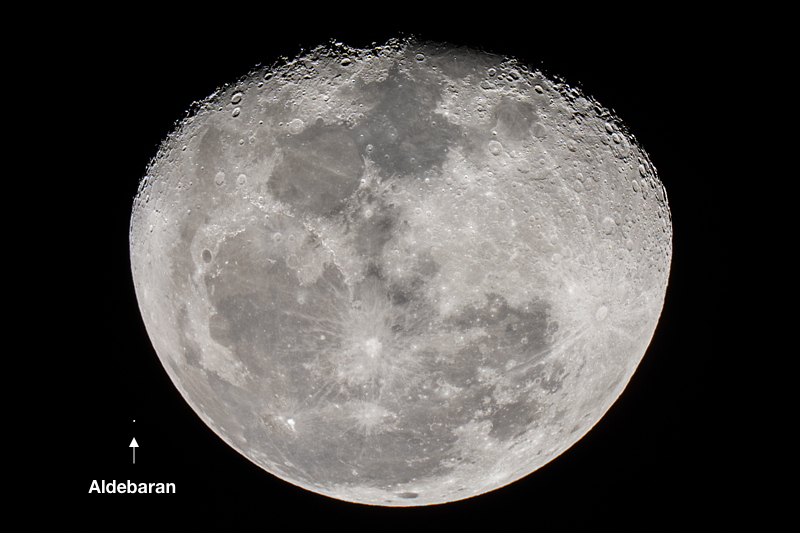iPhone: M13, ISS Pass;
DSLR: Neptune & Uranus Moons, Double Cluster, Aldebaran Occultation
Posted: 19 October 2016
|
Open: Tuesday, 18 October 2016, 1811 MST Temperature: 87°F |
Session: 1025 Conditions: Clear |
Equipment Used:
12" f/8 LX600 w/StarLock
Wireless AutoStar II handset
2" 24mm UWA eyepiece
Camera:
iPhone 6s Plus
D7200 DSLR
1816 MST: LX600 ON, StarLock OFF, High Precision OFF.
1819 MST: viewed Venus, 102X. Nearly half-phase now.
1820 MST: Saturn, 102X. Moons Titan and Rhea visible.
Then Mars, 102X. Dark surface feature visible.
1825 MST: slewed to M13 (Great Globular Cluster in Hercules). It was faintly visible at 102X. It would be the first imaging target after the end of Astronomical Twilight.
Then set up a camera tripod to photograph a pass of the International Space Station (ISS) using the iPhone 6s Plus and NightCap Pro iOS app.
1833 MST: watched an Iridium flare. Had received a notification of it on the Apple Watch from SkySafari 5 Pro.
1837 MST: viewed M13, 94X. Better view now that the sky was darker.
1848 MST: it was turning into a pretty night. The Milky Way was high overhead and looked very nice.
1855 MST: StarLock ON, High Precision ON. Mounted the iPhone on the 12" telescope for afocal 94X imaging of M13 using the SteadyPix adapter. This is a 2 minute exposure using NightCap Pro (Long Exposure, Light Boost, ISO 8000), cropped image:

Set up to photograph the ISS pass. Mounted the iPhone with a clip-on wide-angle lens on the camera tripod using a GorillaGrip. Set NightCap Pro to the "ISS Mode" and captured this image of the ISS rising over the observatory (along with an airplane):

Returned to the observatory. Mounted the D7200 DSLR at prime focus of the 12" telescope. 1953 MST: took this 10 seconds, ISO 6400, image (cropped) of Neptune showing its moon Triton:

2000 MST: Uranus moons, 10 seconds, ISO 6400 (cropped):

2005 MST: eastern sky beginning to brighten from rising waning gibbous Moon. 2015 MST: High Precision ON. Mounted the DSLR at prime focus + focus reducer. Slewed to the Double Cluster for this StarLock autoguided, 30 seconds, ISO 2000, exposure:

2027 MST: StarLock OFF, High Precision OFF. Began waiting for the Moon to rise over the hill to the east. 2059 MST: Moon rising. Began checking camera orientation in order to capture the occultation of the star Aldebaran in about an hour. Did some test HD video recordings, 30 fps, 1/125sec, ISO 100. With preparations completed, began monitoring the approach of the Moon to Aldebaran in the camera viewfinder.
2201 MST: took this photo of the Moon and Aldebaran, 1/400sec, ISO 400:

Click or tap on image for video of disappearance (left side, 19 seconds)
Then began waiting for the reappearance. 2246 MST: Aldebaran reappearance, 1/400sec, ISO 400:

Click or tap on image for video of reappearance (left side, 5 seconds)
2252 MST: removed the camera from the 12" telescope and viewed Aldebaran and the Moon, 102X. Nice view.
|
Close: Tuesday, 18 October 2016, 2303 MST Temperature: 67°F |
Session Length: 4h 52m Conditions: Clear |
Comments are welcome using Email. Twitter users can use the button below to tweet this report to your followers. Thanks.
Cassiopeia Observatory Home Page
Copyright ©2016 Michael L. Weasner / mweasner@me.com
URL = http://www.weasner.com/co/Reports/2016/10/19/index.html
